Unisplendour Energy (UNIenergy) has publicly released its “Twin Star Plan” for the first time, bringing together a team of technical experts in fuel cells, hydrogen storage, and battery stacks at the 6th International Hydrogen and Fuel Cell Automobile Conference (FCVC 2021), which officially opened on June 8 at the Shanghai Automobile Exhibition Center.
At the exhibition, UNIenergy held the “Heavenly Star Hydrogen Sharing Meeting” series of themed activities, which included the Twin Star Plan and a demonstration project of 100 hydrogen-powered heavy-duty trucks. They also signed a contract with Tianjin University for “Hydrogen Vehicle Market and Business Model Innovation Research” to further accelerate the conversion of technological achievements in the hydrogen energy industry to market applications.
The so-called “Twin Star Plan” is a combination of Chinese and international experts. The team is led by technical experts in two areas:
(1) The battery stack team led by Tsutomu Kakutani and Zhengwei Gong.
Tsutomu Kakutani was deeply involved in the design and development of the Toyota Mirai. Zhengwei Gong has 15 years of experience in the automotive manufacturing industry and 8 years of experience in fuel cell battery stack technology.
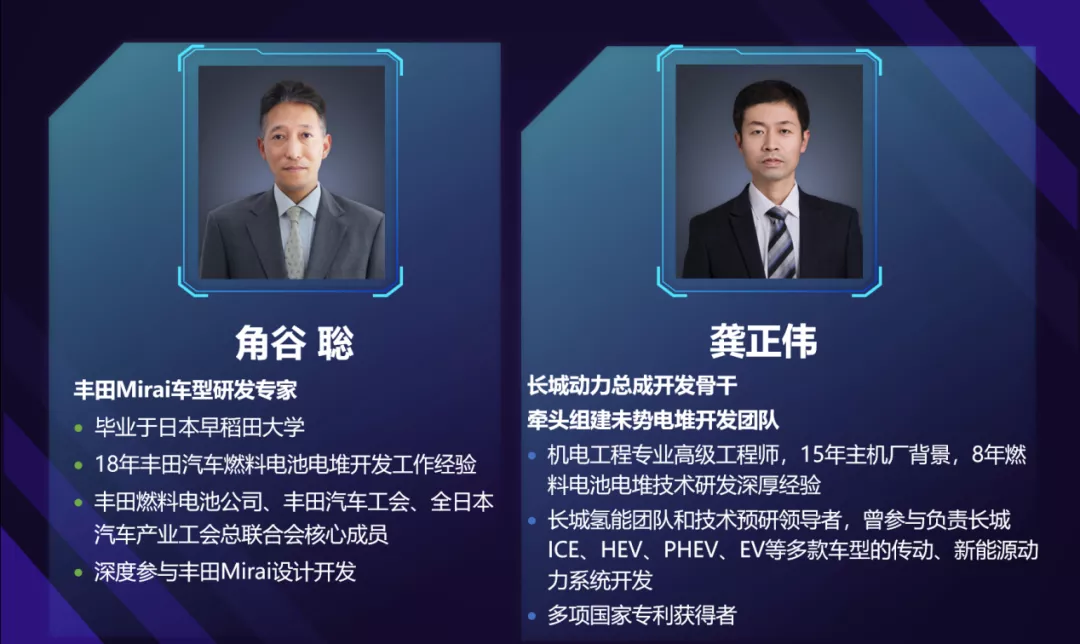
The team has developed a battery stack that achieves a peak power of 150 kW, a stack core volume power density of over 4.2 kW, a durability of 10,000 hours, and cold start at -30°C. The weight is only 82 kg, which is significantly superior to similar products in China.
In terms of process, a 2.5-generation roll-to-roll coating process with a voltage deviation of less than 10 mV has been adopted, and a high-quality and high-efficiency production line capable of producing 1 million membrane electrodes per year has been constructed.
In the future, UNIenergy will promote the development of a battery stack with a power of 200 kW, a volume power density of over 7 kW, and a life of 20,000 hours, through technical optimization and the development of a comprehensive porous flow channel battery stack structure.
(2) The fuel cell team led by Tianyu Cui and Patrick Muhl.
Tianyu Cui was a member of the Hydrogen Energy Expert Group of the Ministry of Science and Technology and a former expert of the BMW Group, with nearly 20 years of experience in the fuel cell industry. Patrick Muhl is a material customer expert with 10 years of experience in fuel cell material research, testing, and diagnosis analysis.
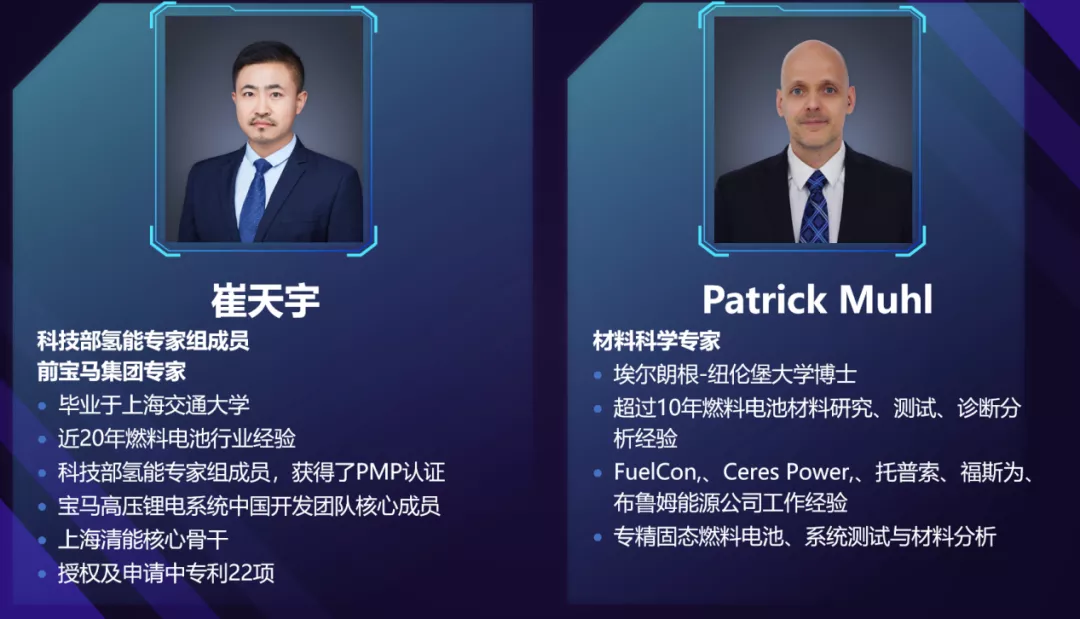 This combination focuses on independent iterative R&D of high-power fuel cell systems for commercial vehicles and passenger vehicles, and customizes the development of control technologies for different application features, such as dynamic performance of passenger vehicles, low-temperature damage-free fast start-stop, and high durability and efficiency control technologies for commercial vehicles. These technologies include common engine control technologies (such as NODS technology for real-time online health diagnosis of fuel cells, multivariate decoupling closed-loop control technology, and hydrogen injection + hydrogen circulation injection integrated module, etc).
This combination focuses on independent iterative R&D of high-power fuel cell systems for commercial vehicles and passenger vehicles, and customizes the development of control technologies for different application features, such as dynamic performance of passenger vehicles, low-temperature damage-free fast start-stop, and high durability and efficiency control technologies for commercial vehicles. These technologies include common engine control technologies (such as NODS technology for real-time online health diagnosis of fuel cells, multivariate decoupling closed-loop control technology, and hydrogen injection + hydrogen circulation injection integrated module, etc).
At present, the fuel cell team has incubated two engines: a 110 kW engine for commercial vehicles and a 95 kW engine for passenger vehicles. Both have been installed in vehicles, and their system parameters (life, efficiency, power density, etc.) are all leading domestically, with a localization rate of 100%.
Team of hydrogen storage, led by Wang Dongyu and Jurgen Louis:
Wang Dongyu is the leader of the national project and has 13 years of R&D experience; Jurgen Louis has 22 years of R&D experience and has worked on hydrogen-related technology R&D at Shell.
This team is mainly engaged in high-pressure gaseous hydrogen storage and liquid hydrogen technology R&D, which includes R&D of four types of hydrogen storage cylinders, 70 MPa high-pressure cylinder valves and pressure-reducing valves, and other components. The various performance indicators of the high-pressure products have a clear advantage when benchmarked against foreign mainstream products, such as high-pressure valve products having superior volume and weight, which are more in line with the design concept of system light-weighting and compactness.
In the development process of Type IV cylinders, Huiye energy hydrogen storage team used a dry winding design process to solve the problem of linear design and bottle mouth seal during the winding process, which effectively improved the quality and hydrogen storage density of the hydrogen cylinder.
In addition, as a blank project in China, the 70 MPa valve product has completed the prototype design of the bottle valve product and pressure-reducing valve product. Among them, the 70 MPa pressure-reducing valve product has completed a total of 17 bench tests, including hydraulic strength test, hydrogen pressure-flow calibration test, and pressure reduction outlet fluctuation test, etc. Currently, it has been installed on a certain fuel cell vehicle for on-road testing and has successfully completed the low-temperature calibration in Heihe in the winter of 2020.## Persisting in Customer-oriented Approach: From Customers and to Customers
Uncensored Energy’s rapid progress in technology development may be closely related to its fundamental principle of persisting in a customer-oriented approach both from and to customers. Customer demands not only inspire forward-looking research but also force them to make technological improvements.
Uncensored Energy’s Chairman, Zhang Tianyu, gave several examples of this.
In terms of developing key common components, Uncensored Energy established common components for each module, but some could not meet customer needs, such as the hydrogen circulation device. The integrated solution for the circulating pump could not be put into the engine compartment, so it was forced to develop an integral injector. Although the initial version of the program was put in the front of the engine compartment, it did not pass the collision analysis. They worked with experts from Korea and Germany to produce more than a dozen versions of the program. By optimizing the integration of the injector and soda-water separator, they greatly reduced the thickness and ultimately passed customer tests.
In the development of control technology, different customers have different requirements—passenger cars focusing on dynamic carrying capacity and commercial vehicles focusing on high efficiency. They also have common concerns, such as battery lifespan. To prolong the lifespan of the battery stack, a means of observing the optimal operating environment of the fuel cell stack is necessary. Currently, Patrick is leading a team to develop the Nod system, which can diagnose whether the fuel cell stack is flooded, dry, or hungry, and can adjust operational parameters in a timely manner to achieve true closed-loop control of the fuel cell.
In terms of test method development, Uncensored Energy is constantly improving. For example, during winter testing last year, an Uncensored Energy test vehicle parked on a steep slope and failed to start, forcing the technical team to develop a three-axis rotating test bed to simulate actual driving conditions. This upgraded the original one-dimensional static low-temperature test to a two-dimensional dynamic low-temperature test. Zhang Tianyu stated that they will continue to develop a three-dimensional low-temperature testing method with overlaid shock spectra in the future.
Release of One Hundred Hydrogen-Powered Heavy Truck Demonstration Project
In the end, technology development must be industrialized.
At this “Tianxing Hydrogen Sharing Conference” event, Shangran Power Technology’s Chief Technical Officer Wang Xiaohua released for the first time the “One Hundred Hydrogen-Powered Heavy Truck Demonstration Project.” The project is a joint development by Uncensored Energy, Dayun, and Dongfeng companies with the supporting Shangran Power Technology’s self-developed 111 kW fuel cell system surpassing 300EP for the development of hydrogen-powered heavy truck models.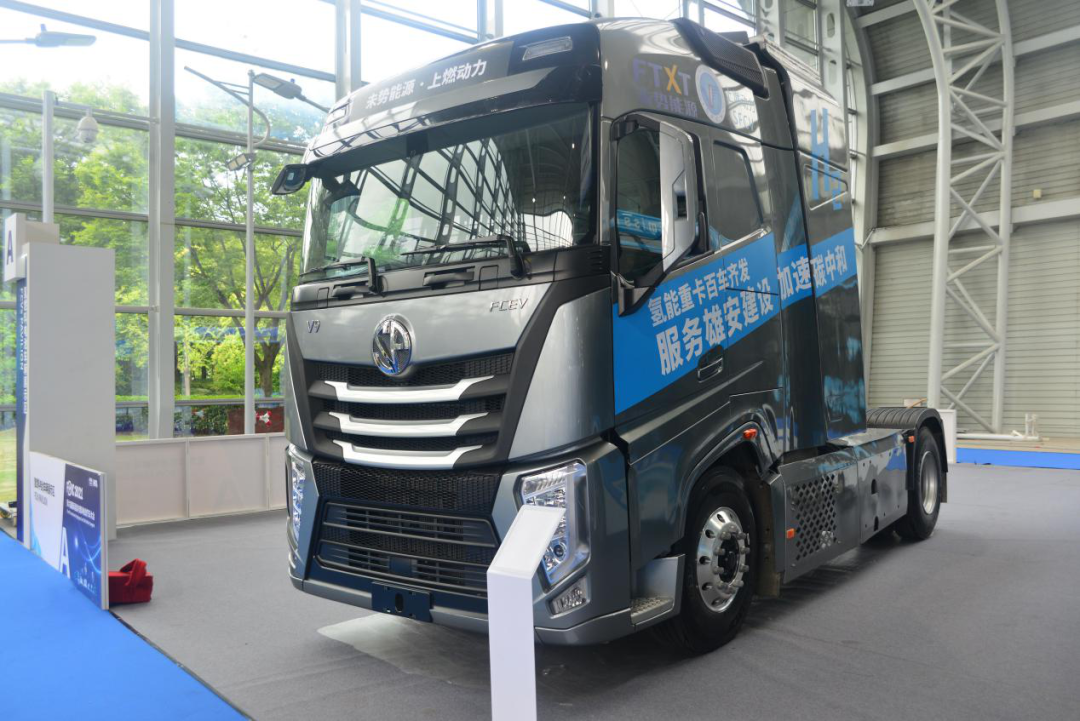
It is worth mentioning that the project is based on the demand for construction materials transportation on the “Rongyi Line” in Xiong’an New Area, with a total length of 50 kilometers, 10 hydrogen refueling stations, and a designed speed of 80 kilometers per hour. It will be officially put into operation soon to assist the construction of Xiong’an New Area, and the experience gained from this project will be further extended to other regions to help achieve the “3060” dual-carbon target quickly.
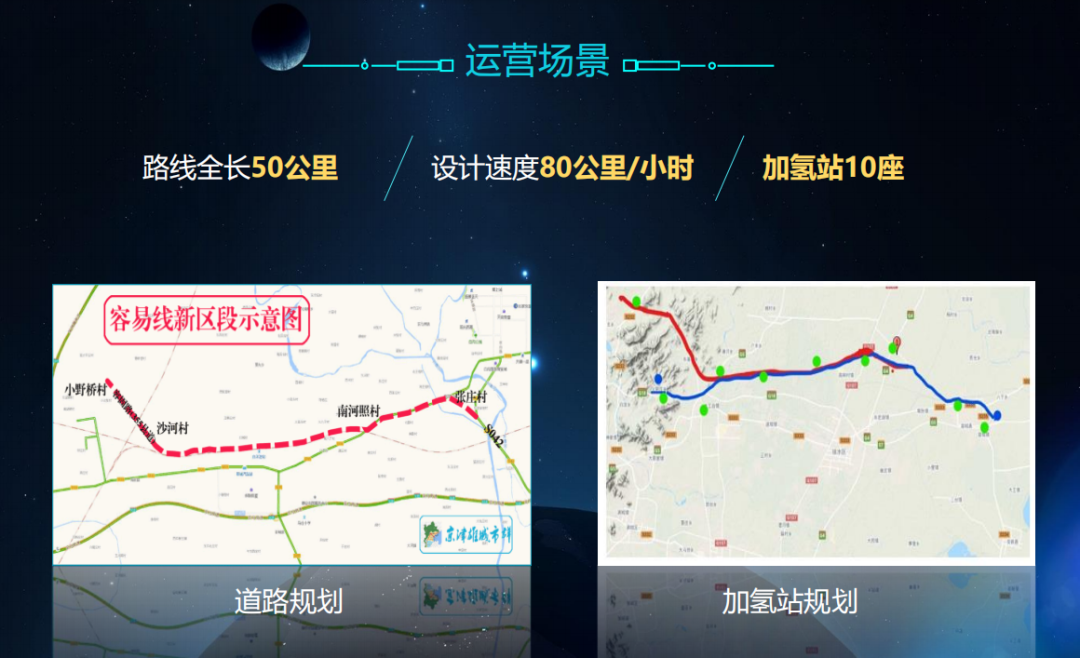
In addition, in order to further accelerate the transformation of scientific and technological achievements into industrial applications, UNIPOWER and Tianjin University held a signing ceremony for the “Innovation Research on Hydrogen Energy Vehicle Market and Business Model” project. They will jointly promote the research and application of fuel cell vehicle market, and promote the high-quality development of the fuel cell industry.
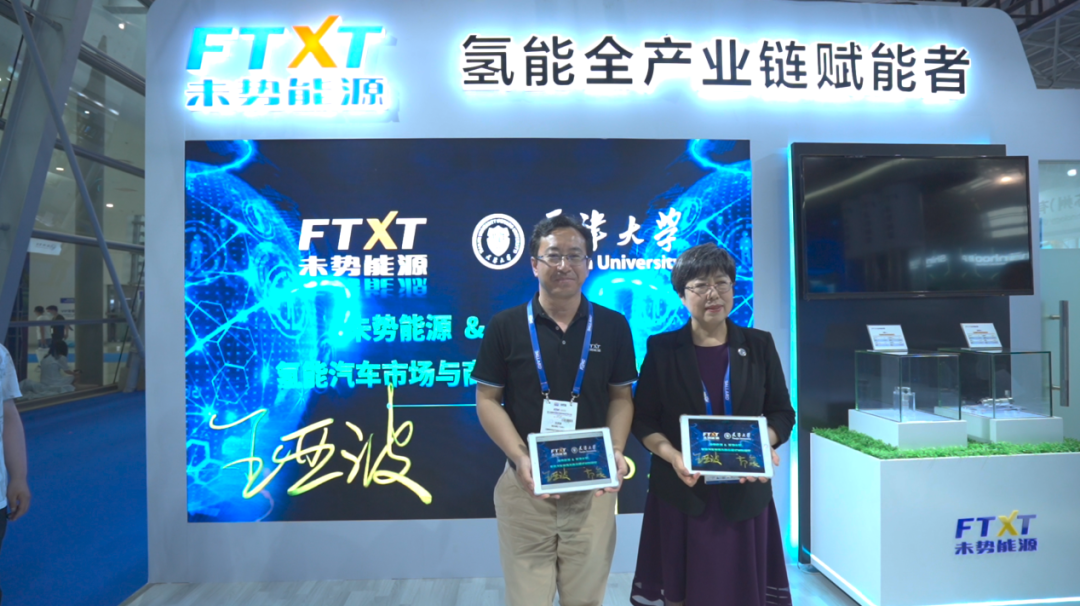
The Tianjin University Automotive Strategy Team has more than ten years of experience in automotive market research, and has jointly conducted market forecasting research with China Association of Automobile Manufacturers (CAAM), with considerable influence in the domestic and foreign automobile industry. Next, UNIPOWER will work together with the China Automotive Strategy Development Research Center at Tianjin University to conduct in-depth research on the promotion and application of vehicle models suitable for different industries, regions, and scenarios in China, and timely release research results and reliable industry development suggestions for governments, industry organizations, and enterprises, thus promoting the high-quality development of the whole industry.
This article is a translation by ChatGPT of a Chinese report from 42HOW. If you have any questions about it, please email bd@42how.com.